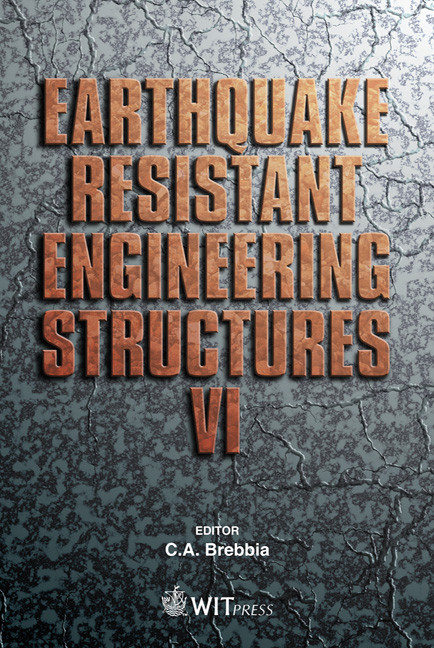Introducing Orthogonal Roller Pairs As An Effective Isolating System For Low Rise Buildings
Price
Free (open access)
Transaction
Volume
93
Pages
11
Published
2007
Size
872 kb
Paper DOI
10.2495/ERES070151
Copyright
WIT Press
Author(s)
M. Hosseini & K. Kangarloo
Abstract
In this paper a new isolating system is introduced which does not need sophisticated manufacturing techniques, and is not costly as other existing systems like lead-rubber bearing, or friction pendulum bearing systems. The proposed system consists of two pairs of orthogonal steel rollers, making possible the movement of the superstructure in all horizontal directions. Rollers move on a cylindrical steel bed, which gives a restoring capability to the system. The two rollers are connected together at both ends with two hinged plates. This makes the two rollers move together and have the same elevation in the cylindrical bed at any instant during the earthquake. The natural period of the system is almost independent of the superstructure mass, and is basically a function of r/R ratio in which r is the radius of the rollers and R is the radius of the cylindrical beds. To obtain the appropriate values of r and R to reach a specific value of the natural period of the isolated system, in addition to analytical hand calculations, some numerical Finite Element calculations have been performed. The calculations have been verified by laboratory tests. Results show that if the rollers and cylindrical beds are made of high-strength steel (MO40 alloy steel) the system can be used effectively buildings up to five stories. Keywords: orthogonal rollers, base isolation, rolling and slope resistance, Hertz contact theory, transfer reaction, contact friction.
Keywords
orthogonal rollers, base isolation, rolling and slope resistance, Hertz contact theory, transfer reaction, contact friction.





